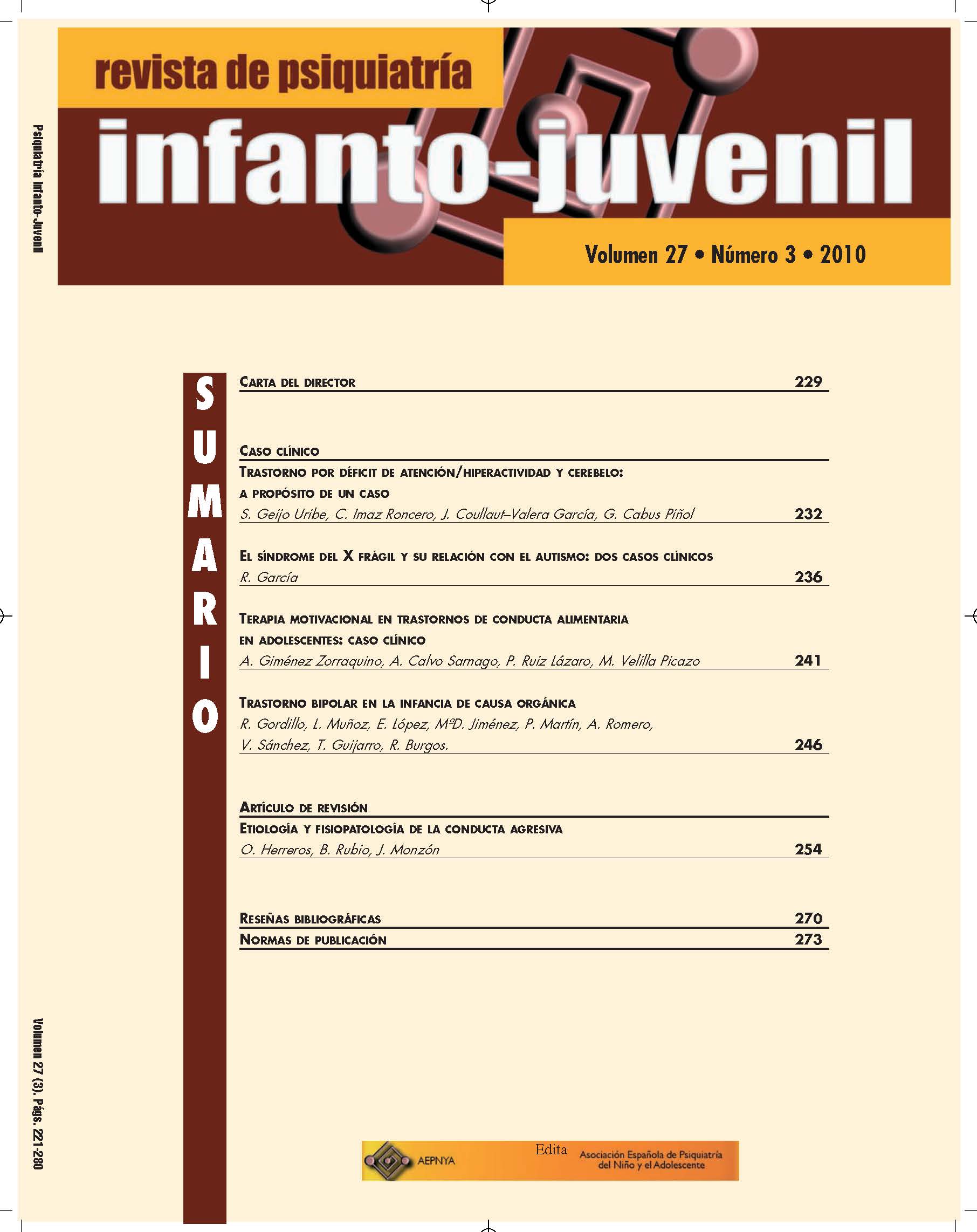Attention-deficit/hyperactivity disorder and cerebellum: a case report
Downloads
Published
How to Cite
Issue
Section
Keywords:
Attention Deficit/Hyperactivity Disorder, ADHD, Cerebellum, atomoxetineAbstract
Attention deficit / hyperactivity disorder is one of the most common conditions in Child and Adolescent psychiatric clinics. Traditionally it has been treated using stimulants, although the use of atomoxetine provides an alternative way of treatment; but there is not yet clear criteria in which cases we should used it to obtain a better response in these kind of patients. There has been increasing interest in the zone of cerebellum in the pathogenesis of ADHD. Its role is related to the noradrenergic pathway, and it may have a direct involvement in the choice of atomoxetine as an effective treatment. We present a clinical case with neuroimaging changes in cerebellum and a better response to atomoxetine than to methylphenidate.
Downloads
References
2. Berquin PC, Giedd JN, Jacobsen LK et al. The cerebellum in attentiondeficit/hyperactivity disorder: a morphometric study. Neurology 1998; 50: 1087-1093.
3. Castellanos FX, Acosta MT. Neuroanatomía del trastorno por déficit de atención con hiperactividad. Rev Neurol 2004; 38 (Suppl 1): S131-S136.
4. Castellanos FX, Tannock R. Neuroscience of attention-deficit hyperactivity disorder: The search for endophenotypes. Nature Reviews. Neuroscience 2002, 3: 617-628.
5. Cherkasova MV, Hechtman L. Neuroimaging in Attention-Deficit Hyperactivity Disorder: beyond the frontoestriatal circuitry. Can J Psychiatry. 2009; 54 (10): 651-664.
6. Faraone SV, Perlis RH, Doyle AE et al. Molecular genetics of attentiondeficit/hyperactivity disorder. Biol Psychiatry 2005; 57: 1313-1323.
7. Glaser PE, Surgener SP, Grondin R et al. Cerebellar neurotransmission in attention-deficit/hyperactivity disorder: does dopamine neurotransmission occur in the cerebellar vermis? J Neurosci Methods 2006; 151 (1): 62-67.
8. Kessler RC, Adler L, Barkley R et al. The prevalence and correlates of adult ADHD in the United States: results from the National Comorbidity Survey Replication. Am J Psychiatry 2006; 163: 716-723.
9. Kieling, Goncalves, Tannock, Castellanos. Neurobiology of Attention Deficit Hiperactivity disorder. Child Adolesc Psychiatric Clin N Am 2008; 17: 285-307.
10. Wilens TE, Newcorn JH, Kratochvil CJ et al. Long-term atomoxetine treatment in adolescents with attention-deficit/hyperactivity disorder. J Pediatr 2006; 149 (1): 112-119.





 © 2021 AEPNyA Todos los derechos reservados
© 2021 AEPNyA Todos los derechos reservados
